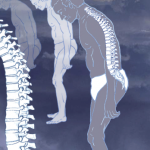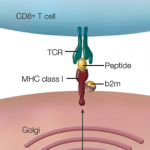Given the efficacy of TNF-a inhibitors in adults with SpA, it is reasonable to predict that they will be beneficial in children. Indeed, small open-label studies of TNF-a inhibitors in pediatric patients with undifferentiated SpA have shown improvement in inflammation and the number of active joints and tender entheses.30,31 However, concern over the risk of lymphoma and other malignancies means that every decision to use these agents must be an informed one. Assessing the actual risk of TNF-a blockade in patients with rheumatic and other inflammatory diseases has been confounded by the concomitant use of other medications and lack of uniform data collection. Additional data from postmarketing surveillance and registries will be important to determine long-term safety of these and other biologics. For now, the decision to use TNF-a inhibitors involves weighing risks with potential benefits in the treatment of what can otherwise be a very debilitating disease with potentially irreversible sequelae.
Separate classification criteria for pediatric SpA have been developed to recognize signs and symptoms of SpA that are more common in children and reduce reliance on clinical features reflecting axial disease that are frequently lacking. Although this is important to capture the broad spectrum of undifferentiated SpA, it has become increasingly important to identify children with undifferentiated SpA who also have axial involvement. The ASAS criteria for pre-radiographic axial SpA provide a tangible starting point, although it may be possible to relax the requirement for three months of back pain, because this symptom is unusual in children.
Prospects for Genetics
The discovery of several novel genetic polymorphisms that, together with HLA-B27, explain a large proportion of predisposition to AS, provide a unique opportunity to determine the value of these markers to predict outcomes and identify children who may benefit from early aggressive therapy.14 Until pediatric SpA classification is formally re-addressed, a reasonable interim approach might be hierarchical:
- Identify children with juvenile AS (those under age 16 who meet the modified New York criteria);
- Apply the ASAS criteria to identify axial SpA when possible; and
- Use the ILAR system to identify undifferentiated SpA including both ERA and psoriatic arthritis.
Dr. Colbert is chief of the pediatric translational research branch at the National Institute of Arthritis and Musculoskeletal and Skin Diseases, National Institutes of Health in Bethesda, Md.
References
- Helmick CG, Felson DT, Lawrence RC, et al. Estimates of the prevalence of arthritis and other rheumatic conditions in the United States. Part I. Arthritis Rheum. 2008;58:15-25.
- Braun J, Sieper J. Ankylosing spondylitis. Lancet. 2007;369:1379-1390.
- Hofer M. Spondylarthropathies in children—are they different from those in adults? Best Pract Res Clin Rheumatol. 2006;20:315-328.
- Baraliakos X, Listin J, Brandt J, et al. Clinical response to discontinuation of anti-TNF therapy in patients with ankylosing spondylitis after 3 years of continuous treatment with infliximab. Arthritis Res Ther. 2005;7:R439-R444.
- Flatø B, Hoffmann-Vold AM, Reiff A, et al. Long-term outcome and prognostic factors in enthesitis-related arthritis: A case-control study. Arthritis Rheum. 2006;54:3573-3582.
- Feldtkeller E, Khan MA, van der Heijde D, van der Linden S, Braun J. Age at disease onset and diagnosis delay in HLA-B27 negative vs. positive patients with ankylosing spondylitis. Rheumatol Int. 2003;23:61-66.
- Rosenberg AM, Petty RE. A syndrome of seronegative enthesopathy and arthropathy in children. Arthritis Rheum. 1982; 25:1041-1047.
- Petty RE, Southwood TR, Manners P, et al. International League of Associations for Rheumatology classification of juvenile idiopathic arthritis: Second revision, Edmonton, 2001. J Rheumatol. 2004; 31:390-392.
- Duffy CM, Colbert RA, Laxer RM, Schanberg LE, Bowyer SL. Nomenclature and classification in chronic childhood arthritis: Time for a change? Arthritis Rheum. 2005;52:382-385.
- Barnes MG, Gromm AA, Thompson SD, et al. Subtype-specific peripheral blood gene expression profiles in recent-onset juvenile idiopathic arthritis. Arthritis Rheum. 2009;60, 2102-2112.
- Fall N, Barnes M, Thornton S, et al. Gene expression profiling of peripheral blood from patients with untreated new-onset systemic juvenile idiopathic arthritis reveals molecular heterogeneity that may predict macrophage activation syndrome. Arthritis Rheum. 2007;56:3793-3804.
- Griffin TA, Barnes MG, Ilowite NT, et al. Gene expression signatures in polyarticular juvenile idiopathic arthritis demonstrate disease heterogeneity and offer a molecular classification of disease subsets. Arthritis Rheum. 2009;60:2113-2123.
- Cargill M, Schrodi SJ, Chang M, et al. A large-scale genetic association study confirms IL12B and leads to the identification of IL23R as psoriasis-risk genes. Am J Hum Genet. 2007;80: 273-290.
- Wellcome Trust Case Control Consortium, Australo-Anglo-American Spondylitis Consortium (TASC), Burton PR, et al. Association scan of 14,500 nonsynonymous SNPs in four diseases identifies autoimmunity variants. Nat Genet. 2007;39:1329-1337.
- Duerr RH, Taylor KD, Brant SR, et al. A genome-wide association study identifies IL23R as an inflammatory bowel disease gene. Science. 2006;314:1461-1463.
- Layh-Schmitt G, Colbert RA. The interleukin-23/interleukin-17 axis in spondyloarthritis. Curr Opin Rheumatol. 2008;20:392-397.
- LaSalle SP, Deodhar AA. Appropriate management of axial spondyloarthritis. Curr Rheumatol Rep. 2007;9:375-382.
- van der Heijde D, Landewé R, Baraliakos X, et al. Radiographic findings following two years of infliximab therapy in patients with ankylosing spondylitis. Arthritis Rheum. 2008; 58:3063-3070.
- van der Heijde D, Landewé R, Einstein S, et al. Radiographic progression of ankylosing spondylitis after up to two years of treatment with etanercept. Arthritis Rheum. 2008;58: 1324-1331.
- Lories RJ, Derese I, de Bari C, Luyten FP. Evidence for uncoupling of inflammation and joint remodeling in a mouse model of spondylarthritis. Arthritis Rheum. 2007; 56: 489-497.
- Diarra D, Stolina M, Polzer K, et al. Dickkopf-1 is a master regulator of joint remodeling. Nat Med. 2007;13:156-163.
- Yamazaki M, Fukushima H, Shin M, et al. TNFa represses BMP signaling by interfering with the DNA binding of smads through the activation of NF-kB. J Biol Chem. 2009;284: 35987-35995.
- Baraliakos X, Listing J, Rudwaleit M, Sieper J, Braun, J. The relationship between inflammation and new bone formation in patients with ankylosing spondylitis. Arthritis Res Ther. 2008;10:R104.
- Appel H, Sieper J. Spondyloarthritis at the crossroads of imaging, pathology, and structural damage in the era of biologics. Curr Rheumatol Rep. 2008;10:356-363.
- Maksymowych WP, Chiowchanwisawakit P, Clare T, Pedersen SJ, Østergaard M, Lambert RG. Inflammatory lesions of the spine on magnetic resonance imaging predict the development of new syndesmophytes in ankylosing spondylitis: Evidence of a relationship between inflammation and new bone formation. Arthritis Rheum. 2009;60:93-102.
- Rudwaleit M, Landewé R, van der Heijde D, et al. The development of Assessment of SpondyloArthritis international Society classification criteria for axial spondyloarthritis (part I): Classification of paper patients by expert opinion including uncertainty appraisal. Ann Rheum Dis. 2009;68:770-776.
- Rudwaleit M, van der Heijde D, Landewé R, et al. The development of Assessment of SpondyloArthritis international Society classification criteria for axial spondyloarthritis (part II): Validation and final selection. Ann Rheum Dis. 2009;68:777-783.
- Zochling J, van der Heijde D, Burgos-Vargas R, et al. ASAS/EULAR recommendations for the management of ankylosing spondylitis. Ann Rheum Dis. 2006;65:442-452.
- Burgos-Vargas R. A case of childhood-onset ankylosing spondylitis: Diagnosis and treatment. Nat Clin Pract Rheumatol. 2009; 5:52-27.
- Henrickson M, Reiff A. Prolonged efficacy of etanercept in refractory enthesitis-related arthritis. J Rheumatol. 2004;31:2055-2061.
- Tse SM, Burgos-Vargas R, Laxer RM. Anti-tumor necrosis factor alpha blockade in the treatment of juvenile spondylarthropathy. Arthritis Rheum. 2005;52:2103-2108.


